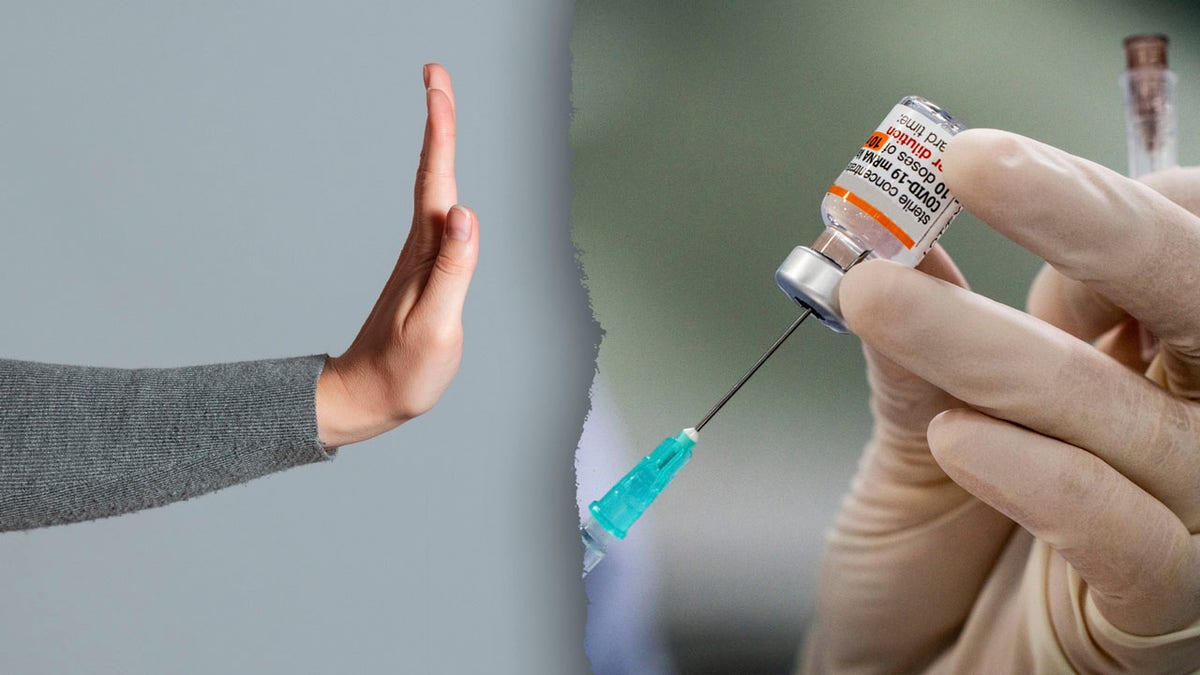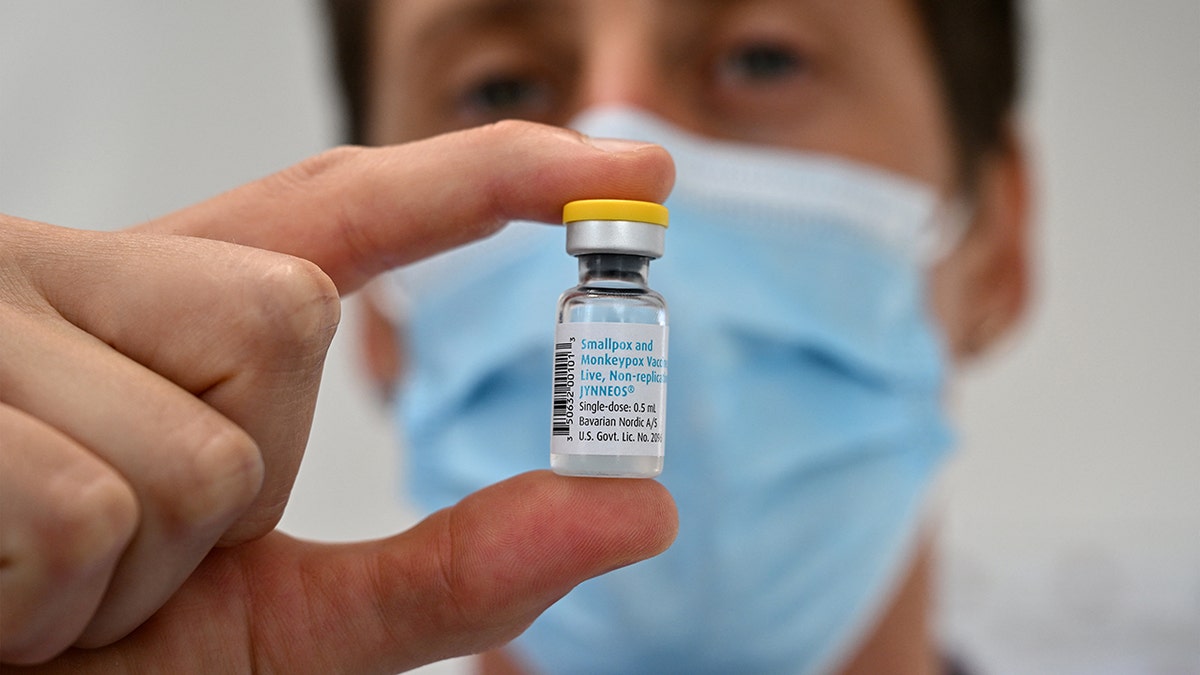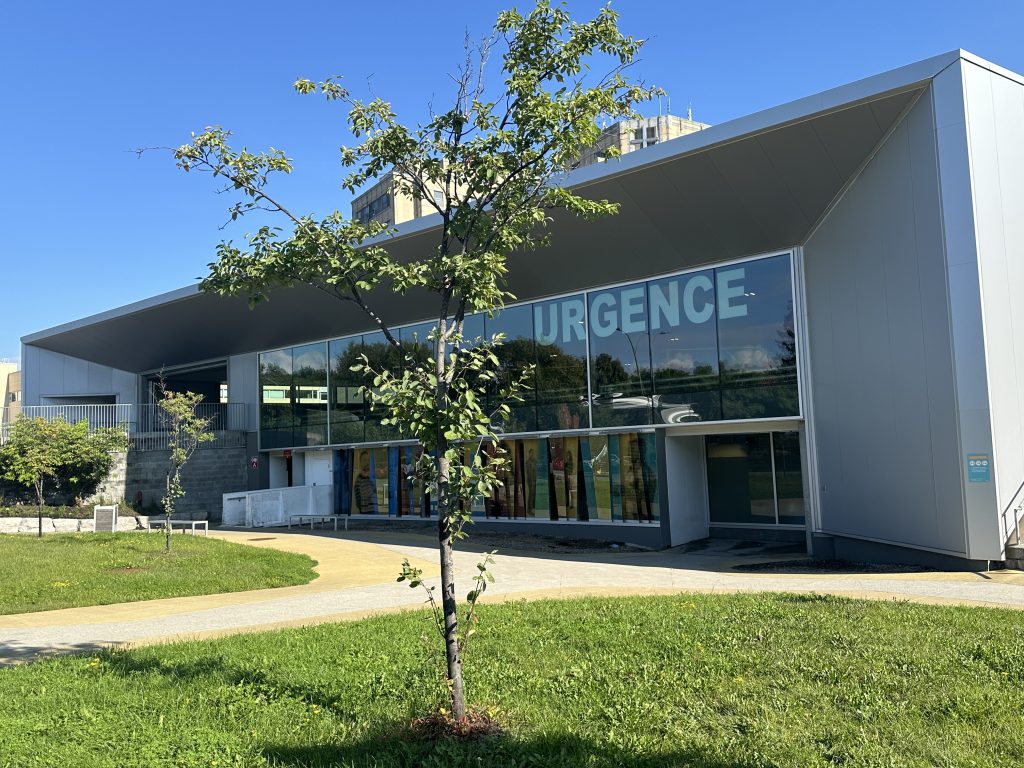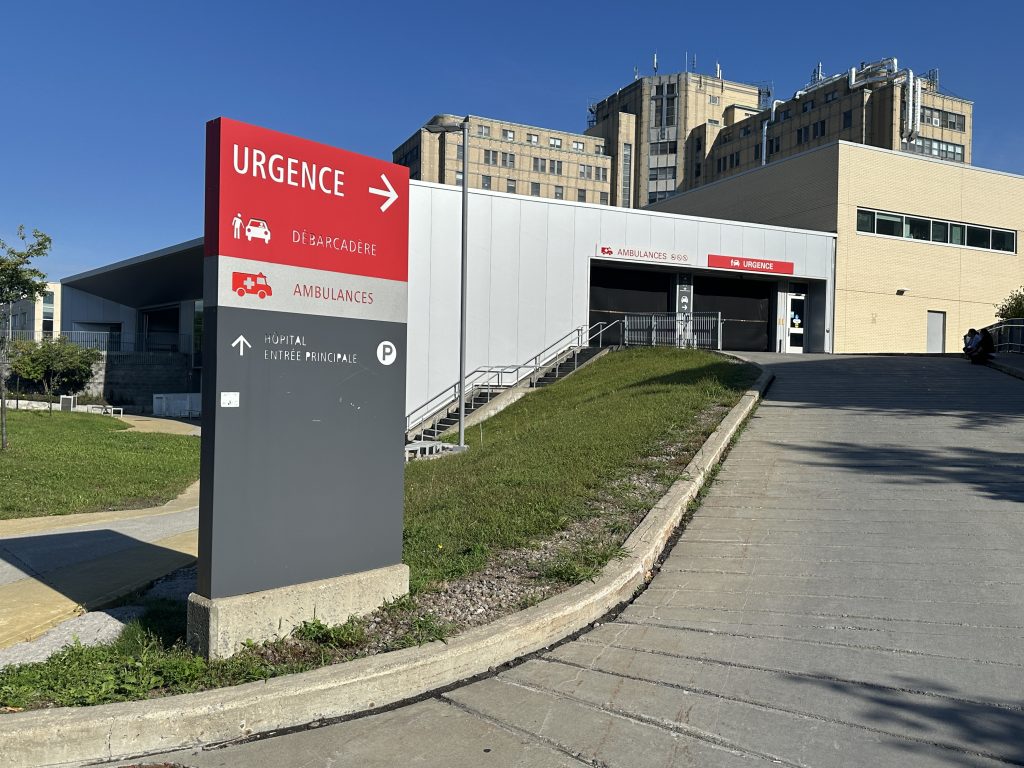Navigation
Install the app
How to install the app on iOS
Follow along with the video below to see how to install our site as a web app on your home screen.
Note: This feature may not be available in some browsers.
More options
Style variation
You are using an out of date browser. It may not display this or other websites correctly.
You should upgrade or use an alternative browser.
You should upgrade or use an alternative browser.
Covid-19 News and Discussions
- Thread starter Yommie
- Start date
Yommie
SpeedLimited
- Oct 2, 2013
- 64,173
- 37,187
- Country of Origin

- Country of Residence

- Thread starter
- #2,089

COVID vaccine distrust growing among Americans, survey finds: ‘Should be a personal choice’
A growing number of Americans are skeptical of vaccines for COVID and other infectious diseases, according to a health survey by the Annenberg Public Policy Center at the University of Pennsylvania.
COVID vaccine distrust growing among Americans, survey finds: ‘Should be a personal choice’
Nearly a quarter of people think it is safer to get COVID than it is to get vaccinated

Published August 31, 2024 4:28pm EDT
close
Former LA firefighters fired over COVID vaccine fighting to get their jobs back
A growing number of Americans are skeptical of vaccines for COVID and other infectious diseases, according to the most recent national health survey by the Annenberg Public Policy Center at the University of Pennsylvania.More than a quarter of respondents (28%) said they believe the COVID vaccines have contributed to thousands of deaths, according to a press release. This is an increase from 22% in June 2021.
Meanwhile, 22% of respondents said they are under the assumption that it is safer to contract COVID than it would be to get vaccinated — an increase from 10% in April 2021.

NEW COVID VACCINES GET FDA APPROVAL FOR 2024-2025 SEASON
Also, 15% of Americans said they believe the vaccine "changes people’s DNA," up from 8% since the last survey.
The survey gathered input from nearly 1,500 U.S. adults.

A growing number of Americans are skeptical of vaccines for COVID and other infectious diseases, according to the most recent national health survey by the Annenberg Public Policy Center at the University of Pennsylvania. (iStock)
"Belief in these three misconceptions is associated with increased reluctance to vaccinate," said Kathleen Hall Jamieson, director of the Annenberg Public Policy Center and director of the survey, in the release.
The survey also found that only 20% of people are "somewhat or very worried" that they or a family member will be infected with COVID, compared to 25% in February 2024 and 35% in October 2023, the researchers shared.
RISKS ASSOCIATED WITH THE COVID VACCINE IDENTIFIED IN STUDY
The results come just after the U.S. Food and Drug Administration (FDA)’s approval of updated COVID vaccines.
"With the CDC reporting that COVID-19 infection remains an ongoing threat and an updated vaccine available, now is the time to ramp up awareness both of the value of vaccinating against COVID-19 and of the risks of contracting the disease," Jamieson added.
Fox News Digital reached out to the study researchers for comment.

The results come just after the U.S. Food and Drug Administration (FDA)’s approval of updated COVID vaccines. (PASCAL GUYOT/AFP via Getty Images)
Dr. Brett Osborn, a Florida neurosurgeon and longevity expert, was not involved in the survey but commented on its findings to Fox News Digital.
"Mainstream narratives continue to emphasize the safety and efficacy of COVID-19 vaccines, but it’s important to take a closer look at the full picture, particularly when considering the risks and benefits of vaccination versus natural immunity — especially in 2024," he said.
One of the most publicized risks associated with mRNA vaccines is myocarditis, an inflammation of the heart muscle, Osborn noted — particularly in younger males.
"Although rare, the occurrence of myocarditis is a serious risk, leading to hospitalization and, in some cases, long-term health issues or death," he said."It’s important to take a closer look at the full picture … when considering the risks and benefits."
Additional risks include neurological complications, including Guillain-Barré syndrome, and other nervous system-related issues like acute disseminated encephalomyelitis (ADEM), the doctor said.
Studies have consistently shown that natural immunity, developed after recovering from an infection, is often more comprehensive and longer-lasting than vaccine-induced immunity, a doctor noted. (iStock)

"While these are not common, their existence is undeniable, and they highlight the need for further discussion about the potential risks of vaccination, especially given the lack of long-term studies," he told Fox News Digital.
"After all, these vaccines are only several years old and, therefore, have not been vetted appropriately – so, in essence, Americans are the ‘study cohort.’"
CDC RECOMMENDS ADDITIONAL COVID VACCINE FOR ADULTS 65 AND OVER
As far as whether the vaccine changes humans’ DNA, Osborn said that is a myth.
"The mRNA in these vaccines instructs cells to produce a spike protein, which triggers an immune response, and then the mRNA is quickly broken down and eliminated from the body," he said.
"There is no evidence to suggest that mRNA can integrate into human DNA."
The COVID landscape has "drastically changed" since it emerged in 2020, a doctor said. "The current strains of the virus, being RNA-based, have undergone numerous mutations that have generally made them less virulent." (Jeff Kowalsky/AFP via Getty Images))
The doctor called for transparent communication from health authorities to dispel myths, while also addressing legitimate concerns about the long-term effects of "novel vaccine technology."
Osborn also pointed out that the COVID landscape has "drastically changed" since the virus emerged in 2020.
"The current strains of the virus, being RNA-based, have undergone numerous mutations that have generally made them less virulent," he said.
"As a result, for the vast majority of the population — particularly those who are healthy and under 60 — a COVID-19 infection today is more likely to result in mild, flu-like symptoms rather than severe illness or death.""This is not about being anti-vaccine, but about making informed, balanced decisions based on the current scientific evidence and the realities of the virus."
In light of this, Osborn said, it may be reasonable to question the push for widespread vaccination — "especially when natural infection can lead to robust, long-lasting immunity."
"There is a big upsurge of COVID FLirt subvariants right now, and the vaccine specifically covers these," a doctor told Fox News Digital. (iStock)
Studies have consistently shown that natural immunity, developed after recovering from an infection, is often more comprehensive and longer-lasting than vaccine-induced immunity, according to Osborn.
"While vaccines have played an essential role in controlling the pandemic, the evolving landscape demands a nuanced approach that respects individual choice, acknowledges the risks in the context of the benefits, and recognizes the power of natural immunity," the doctor said.
"This is not about being anti-vaccine, but about making informed, balanced decisions based on the current scientific evidence and the realities of the virus as it exists today."
FLORIDA SURGEON GENERAL WARNS AGAINST COVID VACCINE
Dr. Marc Siegel, senior medical analyst for Fox News and clinical professor of medicine at NYU Langone Medical Center, said he recommends the updated COVID vaccines for high-risk groups.
"I believe the vaccines remain effective at decreasing risks of severe disease and long COVID, and should especially be considered in high-risk groups, including those with chronic diseases and the elderly," he told Fox News Digital just after the FDA’s approval of the new vaccines for 2024-2025.
"For the vast majority of the population — particularly those who are healthy and under 60 — a COVID-19 infection today is more likely to result in mild, flu-like symptoms rather than severe illness or death," a doctor said. (iStock)
"Beyond this, it should be a personal choice, a discussion between doctor and patient, keeping in mind that viral load and transmission does decrease somewhat in the period after immunization."
CLICK HERE TO GET THE FOX NEWS APP
Regarding the potential side effects, Siegel stated that the risks of the virus — including myocarditis and brain fog — are "far greater," and that the vaccine decreases those risks.
"It's far from perfect, but still quite useful," the doctor said.
"I believe the vaccines remain effective at decreasing risks of severe disease and long COVID, and should especially be considered in high-risk groups."

"There is a big upsurge of COVID FLirt subvariants right now, and the vaccine specifically covers these."
CLICK HERE TO SIGN UP FOR OUR HEALTH NEWSLETTER
The Centers for Disease Control and Prevention (CDC) recommends that everyone 6 months of age and older receive the updated COVID-19 vaccination. That includes women who are pregnant or breastfeeding.
As of the week ending Aug. 24, the Centers for Disease Control and Prevention (CDC) reported that 17% of COVID tests were positive.
For more Health articles, visit www.foxnews.com/health
Meanwhile, 2.5% of those visiting emergency departments were diagnosed as COVID-19 — a drop of 1% from the prior week.
The percentage of deaths related to COVID was 2.2%, per the CDC, up from 1.9% the prior week.
Yommie
SpeedLimited
- Oct 2, 2013
- 64,173
- 37,187
- Country of Origin

- Country of Residence

- Thread starter
- #2,090

The Covid vaccine just got a lot more expensive—if you're uninsured
The CDC's Bridge Access Program is ending amid a Covid surge.
2 hours ago
The Covid Vaccine Just Got a Lot More Expensive—If You’re Uninsured
The CDC’s Bridge Access Program is winding down amid a Covid surge.

Brian Cassella/Chicago Tribune/Tribune News Service/Getty
Fight disinformation: Sign up for the free Mother Jones Daily newsletter and follow the news that matters.
All but three US states have very high or high levels of Covid-19 in their sewage right now, according to the CDC. Due to a drop in efforts to count individual cases, that data is the most accurate way to paint a picture of the current extent of Covid cases—and it’s bad.
In addition to wearing respirators, getting the updated Covid vaccine (mRNA shots were approved last week, and the Novavax vaccine this week) is an important way to reduce one’s chance of getting the infectious disease. Even if a person contracts it, the shot will reduce their risk of death and developing Long Covid.
But for uninsured and underinsured Americans, the vaccine has just gotten significantly more costly. On August 22, the CDC sunsetted its Bridge Access Program, which provided free Covid vaccines to 1.5 million Americans over the past year. A CDC spokesperson told Mother Jones that the sunsetting was a consequence of the new 2024-2025 vaccines being approved—which meant the 2023-2024 vaccines could no longer be administered. But many people did not know that the program would only cover the vaccine approved last year—just that it would end in August, potentially after the new shots became available. The CDC’s page on the program, which was live until some point Friday, did not clarify any of this information.
A rhetorical staple of the Biden administration is that it’s ensured people have the tools to fight Covid—but that is not the case for people unable to afford the updated vaccine out-of-pocket, which typically costs around $200.“For every step that you add in the process of trying to get a vaccine, you’re going to lose people.”
Elizabeth Jacobs, an epidemiologist and professor emeritus at the University of Arizona, has studied the reasons why people do not get Covid-19 boosters. One reason, Jacobs says, is the logistics and challenges of getting the vaccines.
“For every step that you add in the process of trying to get a vaccine, you’re going to lose people,” Jacobs said.
Even before the end of the Bridge Access Program, getting vaccines has not always been easy. One person who spoke to Mother Jones said that he had to explain how the Bridge Program worked to pharmacists before he could get vaccinated for free.
The CDC, however, did announce that it has allocated $62 million for state and local health departments to buy vaccines for uninsured and underinsured people. However, the current surge and delays in implementation means people may fall by the wayside.
“I do have faith that $62 million will be used well to provide vaccines,” says Emory University epidemiology professor Jodie Guest. “Unfortunately, we just don’t have the details for how that will be done yet.”
Guest also notes that the up-front cost of subsidized vaccines is less of a burden on the healthcare system than a spike in the number of people severely ill with Covid. It is hard to know just how many people are currently hospitalized with Covid complications, as hospitals have not been required to report cases to the federal government since May. But the requirement to report respiratory viruses in hospitals will resume on November 1.
Since early in the pandemic, research has highlighted the risks of severe illness that low-income people, who are more likely to have chronic health conditions, face with Covid. These risks remain, and while it’s important that people with Medicare and Medicaid will be able to get updated vaccines, so should low-income people without health insurance.
Children whose guardians are uninsured and underinsured will still be able to get vaccinated for free through the Vaccines for Children program, initially established by Congress in 1993 to make sure more kids were being vaccinated against measles. Chrissie Juliano, the executive director of the Big Cities Health Coalition, says that the ending of the Bridge Access Program underscores the “need for a permanent Vaccines for Adults program.” The Biden administration has proposed funding a Vaccines for Adults program in its proposed budget for the next fiscal year, but Congress could still reject it. In the meantime, Guest also recommends that people search for coupons at pharmacies that could bring down out-of-pocket costs.“Vaccines are only as good as how vaccinated our immediate communities are.”
“Vaccines are only as good as how vaccinated our immediate communities are,” Juliano said. “Vaccines protect us when we individually get it, but we really depend on our neighbors, our family, our friends [and] our classmates to also be fully vaccinated.”
While Covid-19 vaccines can reduce transmission, they are not perfect yet, which highlights the importance of wearing N95 and KN95 masks during surges, especially in medical settings, while traveling, and in other crowded indoor settings.
Jacobs finds it frustrating that masking is no longer promoted by public health agencies as it has become further politicized. “It is an established fact that respirators or high-quality masks reduce your risk significantly of becoming infected,” Jacobs said.
Yommie
SpeedLimited
- Oct 2, 2013
- 64,173
- 37,187
- Country of Origin

- Country of Residence

- Thread starter
- #2,096

Summer wave of COVID-19 cases in Quebec tied to new variants: expert
There was another wave of COVID-19 cases this summer in Quebec, likely driven by variants that — according to early data — are more fatal than previous ones. Cases, hospitalizations and deaths in Quebec due to COVID-19 have been rising steadily since April. There were 450 people in hospital in...
Summer wave of COVID-19 cases in Quebec tied to new variants: expert
Video Player is loading.
Pause
Unmute
Loaded: 100.00%
Captions
ShareFullscreen
Close
“We are at the peak,” said Dr. Donald Vinh, an infectious diseases specialist at the McGill University Health Centre, on the surge of Covid-19 cases in Quebec this summer. Adriana Gentile reports.
By Adriana Gentile
Posted September 1, 2024 12:52 pm.
Last Updated September 1, 2024 6:51 pm.
There was another wave of COVID-19 cases this summer in Quebec, likely driven by variants that — according to early data — are more fatal than previous ones.
Cases, hospitalizations and deaths in Quebec due to COVID-19 have been rising steadily since April.
There were 450 people in hospital in the province with COVID-19 on April 21 — the lowest total for the entire calendar year so far. That number rose to 1,409 on Aug. 26.
More than 2,600 new COVID-19 cases have been reported in the province between Aug. 18-24 — a high not seen since January of this year. There were 292 positive cases between April 14-20.
“There are several metrics to support that there’s definitely COVID rampant activity in the community,” said Dr. Donald Vinh, an infectious diseases specialist at the McGill University Health Centre.
“Every time we see a surge in COVID activity and associated hospitalizations, it always seems to be tied to a new variant. So, it is likely that what we’re seeing now is a result of these new variants, especially the KP3 variants and its descendants, like 3.1, etc.”

“In the emergency room, we’re already at overcapacity across the province, to the point where there are many people coming in who need to be evaluated and hospitalized. However, the amount of space in hospitals is limited or finite. This results in overcapacity and overcrowding in emergency rooms, where people are in structures and hallways. This situation is happening across the province while SARS-CoV-2 activity is increasing.”
“We’re not even at the peak of activity, we are not on the downswing, we are on the peak. It’s hard to know what the trajectory of the SARS-CoV-2 course will be, if it continues to increase for the next few weeks or months, this could actually crumble certain health institutions, particularly emergency rooms and that would compromise their ability to deal with other types of emergencies that can happen in the real world like accidents and heart attacks.”

The overcapacity is causing a major issue for those who desperately need medical attention.
“The bad news is that we’re still seeing people who are getting infected. They’re still getting sick,” said Dr. Vinh. “Those sicknesses can still lead them to require hospitalization, even if they don’t necessarily need artificial means to keep them alive or to support them during their illness. It also leads to things like delays in other therapies.”
“So people who have cancers, who need chemotherapy, or people who need surgery, and are also found to have COVID — the COVID-positive status or the COVID infection in those people still lead to morbidity for their problems, right, for their underlying conditions.”
Dr. Vinh feels clinics could be threatened.
“These outpatient clinics, which are not associated with emergency rooms or hospitals, also operate within a fragile system,” he said. “A reduction in capacity at these clinics would compromise the care of other patients. It’s important to remember that SARS-CoV-2 does not function in isolation. As a preventable disease, minimizing its impact can allow the health-care system to function better for other diseases. However, if preventable diseases are not addressed, the health-care system will be further threatened.”
COVID-19 has been the cause of 38 deaths in the province between Aug. 18-24, bringing the total number of deaths in the province to 117 this month, and 748 this year.
“Provincial data in which the death is directly attributable to SARS-CoV-2 or COVID-19 infection, that’s not going down. That’s actually at a level that’s in between what we saw a few years ago and last year, so it’s an intermediate level of mortality rate,” said Dr. Vinh.
The positive test rate has also increased, bringing the numbers to the highest they have been since December 2023, when the resurgence of the virus in Quebec was the biggest in Canada.
“For people who get tested, the rate of those tests being positive for COVID has been increasing from somewhere around two per cent, just about two to three months ago, to now over 20 per cent,” explained Dr. Vinh.
Dr. Vinh says the high levels of COVID-19 cases is concerning.
“If the COVID-19 attributable mortality rate is not decreasing, but is somewhere between high and low — at an intermediate level — that tells us that there are still some important consequences to SARS-CoV-2 infection, including death. This tells us the virus is not in any way becoming more benign.”
Basic measures for those who are at high risk include not being around those who are symptomatic; consider wearing a mask; being in properly ventilated areas; and getting vaccinated.
“There’s going to be an updated vaccine available in about a month or so, and people should be encouraged to take it, especially those who fall into the high-risk categories or could be at high risk,” Dr. Vinh added.
Yommie
SpeedLimited
- Oct 2, 2013
- 64,173
- 37,187
- Country of Origin

- Country of Residence

- Thread starter
- #2,097

‘They’re about two years behind’: fears for children born during lockdown as they start at school
Covid’s world of masks and remote health visits has created a generation at risk of social and emotional difficulties
‘They’re about two years behind’: fears for children born during lockdown as they start at school
Covid’s world of masks and remote health visits has created a generation at risk of social and emotional difficultiesAnna Fazackerley
Sun 1 Sep 2024 09.00 BST
Share
Babies born in 2020 started life in the strange world of lockdown in a small bubble of people with faces hidden behind masks. Social experiences, such as seeing extended family, trips to the playground or mother and baby groups, could not happen. And struggling public services meant infants were likely to miss out on face-to-face appointments with a health visitor who might have been able to spot developmental difficulties early.
Those babies are now four years old, and in England are arriving at school for the first time this week. Experts say teachers should be braced to encounter – and tackle – problems ranging from poor speech and language development to social and emotional difficulties.
Similar problems have been seen in children who were very young during the pandemic and are already in the system.
“We’ve had an increase in reception children biting one another, throwing things, running off, spitting,” said the headteacher of a primary school in north-west England. He added they were often frustrated or struggled with taking turns, sharing, or following routines and listening in class.
“They don’t have the vocabulary to express what they are feeling,” he said. “They’re about two years behind when they arrive.”
Louisa Reeves, director of policy and evidence at the charity Speech and Language UK, said that, while most babies would get up and walk without parents practising with them, learning to talk and interact required more engagement.
“Ideally babies need to be exposed to many different people who talk to them, and have a broad range of experiences,” she said. “That didn’t happen in the pandemic.”

Aven and Reed at their bedroom window during lockdown in 2021. Their generation missed out on social learning. Photograph: Katherine Anne Rose/The Observer
Masks meant “they weren’t even seeing people’s facial expressions, which help you to pick up whether they are joking or cross”.
Reeves said busy parents often anticipated their baby’s needs and cut verbal communication short. If a baby pointed at a drink, for example, the parent might give it to them without using the word for it.
She said she worried that many families did not know how vital talking to babies and toddlers was. “The red health book everyone is given when they have a baby focuses on weight, nutrition and vaccinations. It should also stress the importance of talking.”
Reeves added that many of the Covid babies would have missed obligatory checks at two and a half years, or had them conducted over the phone or by questionnaire, during which some warning signs could have been missed.
Her charity has found 1.9 million children in the UK – one in five – are struggling with speech and language. The problem had already been building before the pandemic, especially in disadvantaged areas.They don’t have the vocabulary to express what they are feeling. They’re about two years behind when they arrive
The charity’s research found more than half of teachers felt they had not had enough training to tackle problems. “You don’t learn how to teach talking. That’s just mad,” Reeves said.
Katrina Morley, chief executive of Tees Valley Education trust, which runs four primary schools in some of the region’s most deprived areas, said research showed that, if you grew up in a poorer area, your vocabulary would on average be about 3,000 words smaller than that of your peers in wealthier areas. This mattered, she said, because “the limits of your language are the limits of your world”.
“If you see an early years child making a rocket and going to the moon they truly believe it. But if you can’t communicate, where do you start?”
She added that, after years of cuts, there were not enough professionals for the volume of need. Thanks to a nationwide shortage of speech and language therapists, if a child does secure an external assessment, the result will typically be a programme for the school to run with parents. “When and how do you fit that in?”
Funding is tight but Morley’s trust has fought to retain pastoral and welfare staff to work with families.
skip past newsletter promotion
Sign up to Observed
Free weekly newsletter
Analysis and opinion on the week's news and culture brought to you by the best Observer writers
Enter your email address
Sign up
Privacy Notice: Newsletters may contain info about charities, online ads, and content funded by outside parties. For more information see our Privacy Policy. We use Google reCaptcha to protect our website and the Google Privacy Policy and Terms of Service apply.
after newsletter promotion
It helps parents who may be juggling shift jobs, facing mental health problems, or struggling to put food on the table and pay bills, to develop good habits with their young children.
Staff talk about everything from nutrition, teeth-cleaning and toilet training, to the importance of regular bedtimes. Many homes will not have books, and many local and mobile libraries have closed, so the trust sends books home, and guides parents on shared reading.
“If parents are self-conscious or illiterate, they can access a video of a teacher reading the story and share it that way,” she said.
Ruth Swailes, who advises schools on early years education, said the Conservative government had not helped matters by encouraging all schools in spring 2020 to buy into an accredited phonics scheme, and later that year recommending that schools should spend an hour a day on phonics learning.
“These children had been through this unique experience and often missed so much, but teachers were basically being told they must knuckle down and teach phonics,” she said.
Swailes works with schools on teaching social and emotional skills, such as taking turns and sharing.
If children don’t have these skills, or are behind on their language or physical development, “it doesn’t matter how good you are as a teacher, the child won’t make the progress they could”, she said.
“We are seeing more success where schools are being brave and saying, ‘No, this is what we need for our children right now, and we can’t push formal teaching too soon.’”
Julian Grenier, who works on early years teaching at the Education Endowment Foundation, said confronting these issues was vital, because disadvantaged children were already, on average, 4.5 months behind by the end of reception class.
“You might think it doesn’t matter because they are still so young,” he said.
“But that gap has doubled by the end of primary and doubles again by the end of secondary school.”
He remained hopeful about the Covid babies’ futures, saying that we now know a lot more about what helps young children learn key skills. “Reception teachers and teaching assistants are incredible, and usually love their jobs, even when they are on their knees with exhaustion.”
Yommie
SpeedLimited
- Oct 2, 2013
- 64,173
- 37,187
- Country of Origin

- Country of Residence

- Thread starter
- #2,098

Ozempic cuts risk of severe COVID in people with obesity
A new study found popular weight loss drugs Ozempic and Wegovy may reduce the rates of severe COVID-19 reactions, including death.
Ozempic cuts risk of severe COVID in people with obesity
- Semaglutide, known as Ozempic and Wegovy, may reduce COVID-19 reactions
- That includes severe side effects and even death
- Study found 'consistently lower rates' of all-cause death while taking it
Updated: SEP 1, 2024 / 05:19 PM CDT

“Wegovy”, “Ozempic” and “Mounjaro” are sold in the Achat pharmacy in Mitte.
(NewsNation) — The popular weight loss drugs Ozempic and Wegovy may reduce the rates of severe COVID-19 reactions, including death, a new study found.
Published in the Journal of the American College of Cardiology, the trial examined 17,604 people over more than three years.
It found that, while taking semaglutide once a weekly did not reduce rates of COVID-19 overall, it led to fewer “COVID-19 related adverse events.”
Placebo-takers recorded a 3.1% occurrence, while those on the weight loss drugs noted 2.6%.
Compounded weight loss drugs: What are people saying about them?
Participants were:
- 45 years or older
- Overweight or had obesity
- Diagnosed with cardiovascular disease
- Not diagnosed with diabetes
“In general, there were consistently lower rates of all-cause death, CV death, and non-CV death in patients assigned to semaglutide compared with placebo across major subgroups, including by age, sex, race, region, atherosclerotic disease areas, renal function, or heart failure,” the study concluded.
Study finds link between Ozempic and suicidal thoughts
“These findings reinforce that overweight and obesity increases the risk of death due to many etiologies, which can be modified with potent incretin-based therapies like semaglutide,” said Benjamin Scirica, MD, MPH, lead author of the study, according to MedicalXpress reporting.
Users who are viewing this thread
Total: 1 (members: 0, guests: 1)
Pakistan Defence Latest
-
Indian general praises professionalism of Pakistani peacekeepers in South Sudan (6 Viewers)
- Latest: onlinpunit
-
-
-
-
Country Watch Latest
-
Why India Deliberately kept Weakened Bangladesh’s Military | InShort (13 Viewers)
- Latest: Hakikat ve Hikmet
-
-
Iran Cyber Security and Artificial Intelligence (civilian and military) (5 Viewers)
- Latest: Immortals
-
-
Latest Posts
-
-
-
Malaysia’s king to seek funds for high-speed rail from Malaysia to Singapore on China visit (1 Viewer)
- Latest: Beijingwalker
-
Why India Deliberately kept Weakened Bangladesh’s Military | InShort (13 Viewers)
- Latest: Hakikat ve Hikmet
-

